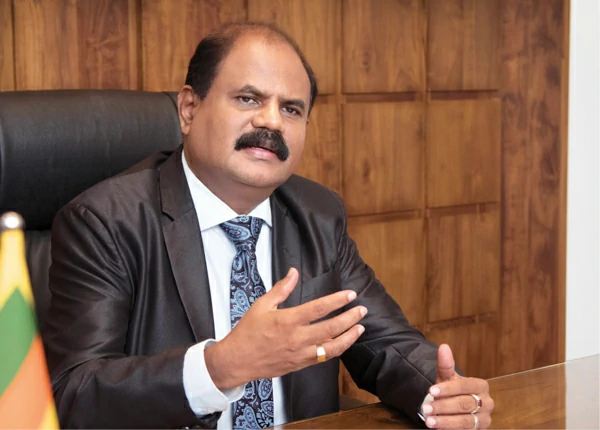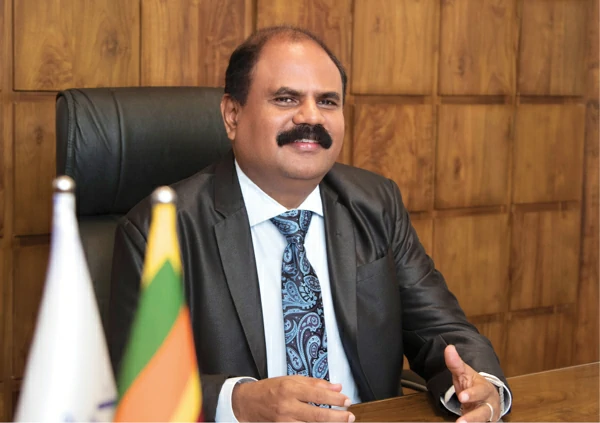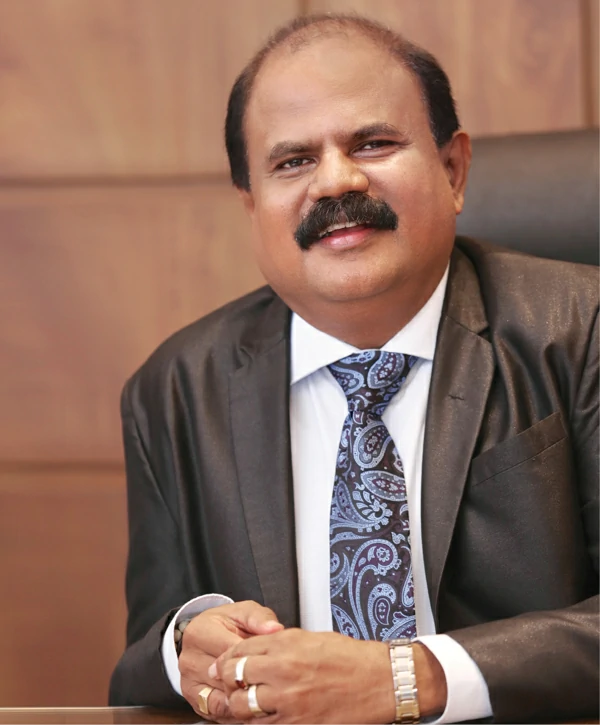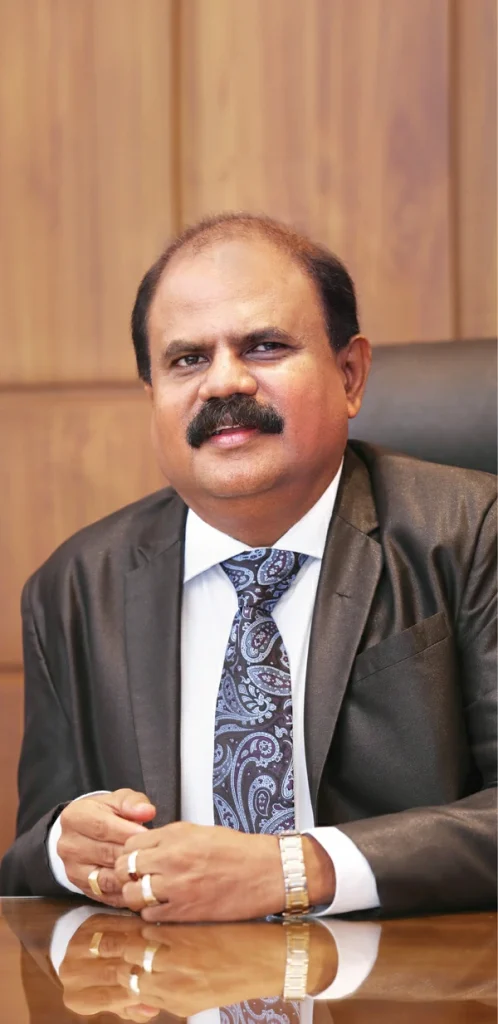
Sri Lanka Telecom: the name itself conjures up the image of a giant, and that is exactly what it is. As the telecommunication and ICT leader of the country, SLT performs the mammoth task of connecting the nation. Chairman Kumarasinghe Sirisena recognises the role that SLT has to play and stresses that the group will always be aligned with national priorities. He is keen to assure that the organisation maintains corporate governance and transparency, thus instilling investor confidence. While bringing the latest technologies to the country, SLT has not forgotten its corporate social responsibilities. The chairman speaks about his plans for the future and what it means to head this telecommunication giant.
By Udeshi Amarasinghe. Assisted by Yomal Senarath-Yapa
Photography Mahesh Bandara and Isuru Upeksha
Can you tell us about the strategic direction of the organisation since your appointment as the chairman of the telecommunication giant?
Sri Lanka has 20-30 per cent internet penetration levels, and as of now has more than 100 per cent voice connection penetration. There is huge potential for an entity to cover the rest for broadband to yield the benefit out of the same. Further, we note that there is a positive correlation between the increase in broadband penetration and the level of development of one’s country.
Since I became chairman, one of the main strategic directions of SLT has been to develop the ecosystem related to the future broadband development of Sri Lanka and to lead the role in the aforementioned development. This role may come from extending a wireless broadband network to uncovered areas, meeting customer needs by laying the national fibre backbone network and making necessary arrangements to feed ecosystem partners like cloud services, IoT (Internet of Things) services for retail and corporate customers.
I feel that as a business entity, which has been in existence for more than 15 decades, SLT and Mobitel are geared to face the challenge of meeting the broadband/internet demand in Sri Lanka.
I must further note that with the development of digital ecosystems in the world, telecommunication providers are being tested and challenged in their own domains in terms of product offerings to solution provisioning. Therefore, I believe that SLT and Mobitel need to reposition themselves in the whole digital ecosystem to yield the best out of development. This has been one of the main strategic challenges that we will be cautiously and mindfully handling in the time to come.
What has been planned for this year to achieve this aim?
Firstly, in the Western province especially, the government has started the Megapolis concept under a separate ministry. We are the communication partner for the new Megapolis, and within the island there will be Smart City, Smart Home, National Data Cloud, National Data Centre and International Data Connectivity, which will be expanded in the upcoming year. Together with the above we will be completing the i-Sri Lanka project and Fibre to Home project, which will enhance service offerings to the public and our island-wide investment focus on 4G broadband.
SLT is the foremost ICT solutions provider in Sri Lanka. Can you elaborate on this?
We take huge pride in being the foremost ICT solution provider in Sri Lanka meeting both retail and corporate market needs. As highlighted, SLT and Mobitel are leaders in their respective domains in contributing to the development of ICT in Sri Lanka.
This is evident in undertaking lead roles to introduce latest wireless technologies such as 3.5G and 4G to Sri Lanka, which created ripples across the South East Asia region to introduce latest world-class cloud services to the Sri Lankan market.
The Telecommunications Sector In Sri Lanka, Especially The Mobile Market, Is Overcrowded. There Is A Dire Need In The Industry To Consolidate The Market, Which Is At An Unsustainable Level.
I further need to note that we at SLT group see the telecommunication infrastructure layer as one of the key ingredients in putting the essential services in place to foster development in the country. Therefore, we focus on both telecommunication infrastructure, which provides the basic platform to build ICT solutions and the solution layer to satisfy customer needs.
In doing the above, SLT has covered 325 divisional secretariats in the country with the National Backbone Licence, which will lay the foundation for base connectivity. We were able to acquire connectivity of a superior international connecting cable system that started construction in January 2016. In addition, the Akasa Cloud system will be adding the necessary infrastructure to accommodate the needs of the ever-growing business community. Our plan is to create a business environment with seamless connectivity and functioning to ensure the smooth carrying out of business operations for the business community as well as for the general public.
SLT is a primary partner in all economic sectors, and with Sri Lanka increasingly becoming an investment-friendly country, how will SLT utilise this opportunity?
We forecast healthy growth levels in terms of the economy and related areas of the economy, which would create value as a telecommunication service and related ecosystem partner. We see the telecommunication layer as one of the basic ingredients of the total infrastructure of a country, which is equivalent to road infrastructure.
The better equipped we are to facilitate the requirements of the telecommunication layer, the better placed we will be to yield the benefits of the said investment-friendly environment. This may be in a form of pure connectivity in terms of wireless connections, fibre connections to provision advance services and on the cloud services to meet customer demands. The key will be to have the right infrastructure and partners in place at the right time to yield the benefits.
We took the novel initiative of starting a fully-fledged technical university called Sri Lanka Technological Campus where we are planning to accommodate around 250-500, in the time to come, using our Padukka Satellite Station premises. We plan to bridge the knowledge and supply gap, which we see in the engineering and management fields, and use the said as a capacity-building exercise as well as a method of managing the brain drain from the country.
With many players entering the telecommunications sector, how does SLT envisage its future?
The telecommunications sector in Sri Lanka, especially the mobile market, is overcrowded. There is a dire need in the industry to consolidate the market, which is at an unsustainable level. As of now, many providers are providing services to a population of only 21 million. There have been many attempts to consolidate the market, which failed due to various reasons.
As a group, SLT and Mobitel envisage the future of the telecommunication market to be consolidated and less crowed to provide an ideal platform that meets the internet/broadband demand to come in the future.
SLT Is One Of The Best Players In The National Economy.
However, I need to note that as an industry we always respect our competition and try to have a healthy relationship with other operators.
What was the significance of visiting the CSE and opening trading last year?
I need to highlight that we are fortunate to get investor confidence and have always maintained a high level of compliance with market regulations; that means good corporate governance and investor confidence.
Sometimes the situations associated with being a state-owned entity does not always reflect in a positive manner. However, if you look at SLT’s market performance in the past, we have always kept ourselves marked to the highest standards in terms of market expectations and company performance.
Can you elaborate on the synergy between SLT and Mobitel?
SLT is the fixed line and the major business enterprise arm, while Mobitel is a subsidiary of SLT. Even though the sole ownership of Mobitel belongs to SLT, Mobitel acts as a total private entity to ensure the best business practices and regulatory compliances.
While Mobitel is focusing on the Mobile market and SLT focuses on the fixed market, as a group, we try to derive the best out of each entity operationally and strategically. The synergy benefits derived from both entities range from operational synergies such as network operations to strategic synergies of each brand affiliation.
I personally oversee the synergy benefits, which can be attained from both entities, in terms of cost as well as revenue aspects. This can be passed down to the public as benefits.
What are the plans for 2016?
Our plans include i-Sri Lanka, E-Learning initiative, 4G broadband technology focus and fibre to home, to name a few. We are focusing on special projects to enhance the network, spectrum and infrastructure capability of the group as a whole, which will be implemented through the projects in the pipeline.
We expect 2016 to be an interesting year where we plan on focusing and investing on the broadband ecosystem starting from the network infrastructure to content and development partners. Whilst we see great opportunities lying ahead, we feel that we need to be mindful about the non-traditional challenges which the developed digital ecosystem provides.
As a telecommunications service provider, we face the same challenge of shortening investment cycles. In the mobile domain, 4G migration from 3G took a faster pace compared to the predecessor’s development to 3G from 2G services. This provides challenges and investment pressure in terms of Returns on Investments, as the time available to yield a return is getting shorter.
Our approach is to take the technology mix as a portfolio and match it to market requirements and maximise the utilisation of the assets while delivering the market expectations.
We understand that development and investment in the network will have lesser weight in the time to come as IT systems, which operate on top of the networks, draw most of the investments as most of the system evolutions occur on the said platform.
Can you tell us about yourself?
I had no plan or hope of becoming a chairman. I am a product of the Management Faculty of Sri Jayewardenepura, the best management faculty in the country where I did my first degree in Bsc (Management) Hons Special in 1980-1984. I also completed two post graduate master’s degrees, one in Human Resources Management and the other in Business Management. In addition I have also successfully completed post graduate diplomas in Accounts and Financial Management and Project Management in the University of Sri Jayewardenepura and Business Management in National Institute of Business Management. That is all speaking academically. Vis-à-vis professional qualifications, I have corporate memberships in over seven professional bodies, including Chartered Institute of Marketing (UK), Sri Lanka Institute of Marketing, Institute of Personnel Management, Association of Public Finance Accountants of Sri Lanka, Institute of Government Accounts and Finance and Association of Accounting Technicians Sri Lanka. I have completed 30 years of service in the state sector and ten years as CEO/general manager. It was under my guidance that the state sector got its first gold award. Due to a style of management with emphasis on human resources management, and due to my experience, I was appointed as the chairman of SLT, to serve the country – not to serve myself.
SLT is one of the best players in the national economy. The task that has been given to me is to increase its current contribution, and to instil professionalism in SLT. I have been ‘released’ from the state sector to do this task. Within the period that I have being assigned to work as the chairman, I have to achieve my goals, and also do my service to the country, the economy and the public.
SLT Is Here Today Thanks To The Efforts Of Everyone Who Worked Here. My Goal Is To Go Beyond Merely Ensuring The Position They Secured For SLT.
I have not kept a power distance; the staff don’t need to make appointments to meet me because I have an open-door policy. I act more as a leader than a chairman. I work all seven days. Most of the time I arrive here ahead of others in the morning. Even though it is not required of me, I am a ‘full-time’ chairman.
Final thoughts?
I come from humble beginnings and I never forget the great responsibility I bear. I was educated through the people’s money; as such, I am aware of my duties. The business strategies of the past have mostly concentrated on large media campaigns, but I have always tried to get the attention of the man on the street – the common man. We will become part of many national endeavours including the Ranaviru Virusara privilege card, kidney protection programme, programmes on child protection, to name a few. We always try to help sections of society who have so far not received any attention. We see beyond commercial gain.
We were ranked among the top 10 in the Business Today TOP 25 ranking this year, which we continued to uphold in the past years and intend to do better in the future. SLT is here today thanks to the efforts of everyone who worked here. My goal is to go beyond merely ensuring the position they secured for SLT.








